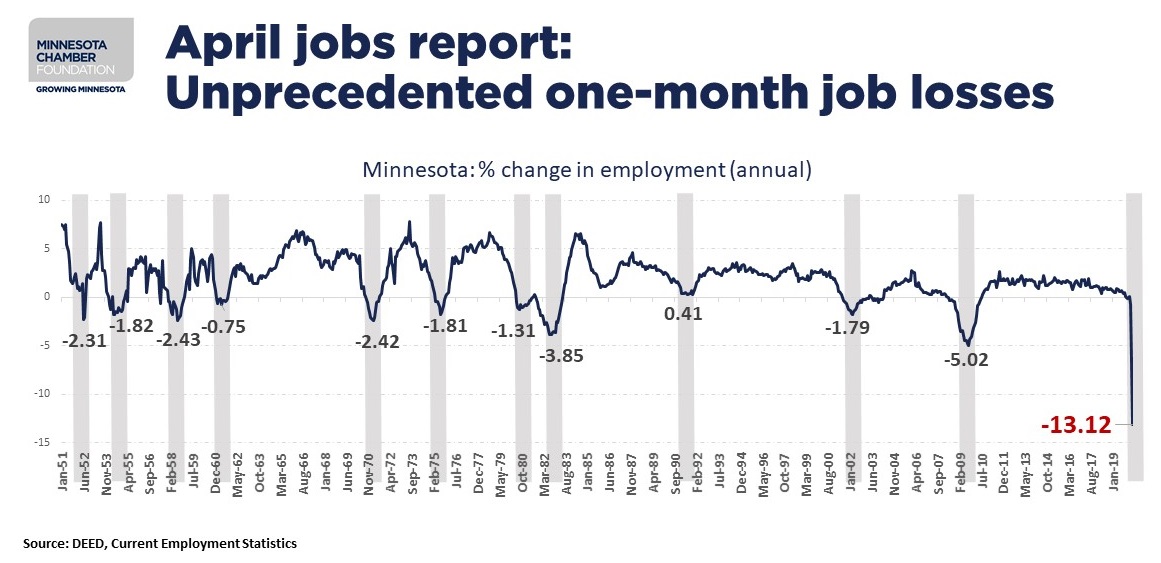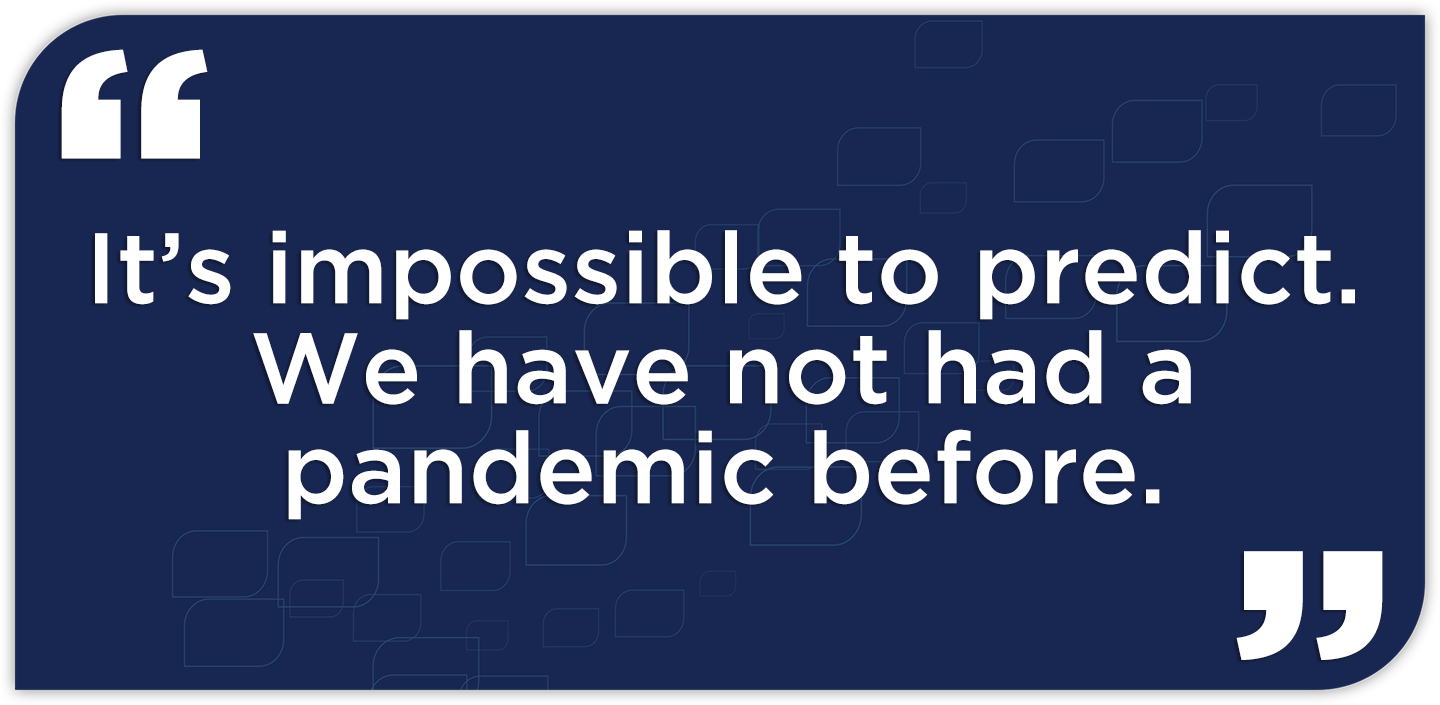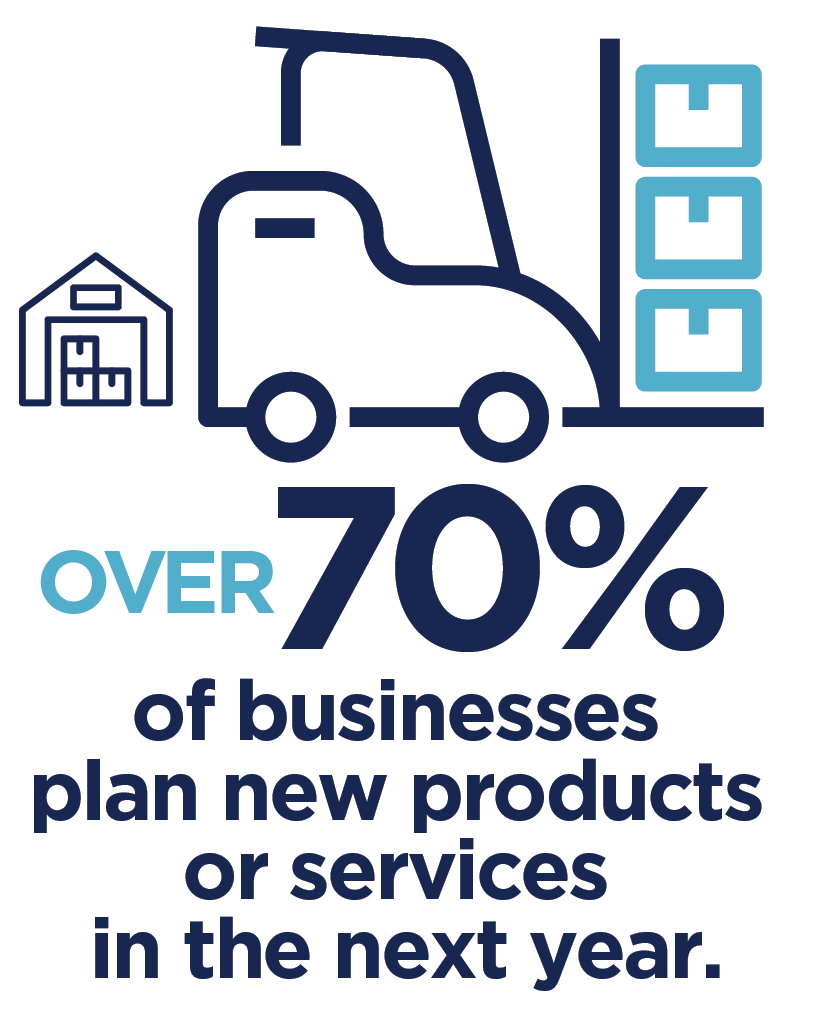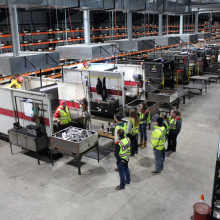What have we learned from businesses in the first three months of the COVID-19 pandemic?

By Sean O'Neil
Director, Economic Research
On Wednesday, March 4, Kathi Schaff, Director of the Grow Minnesota! Partnership, sat down with the owner of a small industrial machinery manufacturer in Central Minnesota to learn about their operations and what they need to grow their business in Minnesota. The owner explained that the 48-employee business had grown 30% over the past two years and was struggling desperately to fill seven open positions so they could meet growing customer demand. This was not surprising—some version of this story had played out in hundreds of other conversations over the past several years, as the combination of slowing labor force growth and nine consecutive years of job expansion had created persistent hiring challenges for businesses.
Just two days later, Minnesota reported its first case of a novel coronavirus, COVID-19, in Ramsey County. Within two weeks, the virus spread and infected at least another 115 Minnesotans. Office buildings emptied out as employees left to work from home. Malls, schools, bars, restaurants, gyms and other large gathering places began to close, at first voluntarily and then under executive order. Unemployment insurance claims spiked, hitting an unprecedented 95,000. A statewide stay-at-home executive order then went into effect on March 27, halting all non-essential business activities. By the end of April, a mere seven weeks after the first reported case, Minnesota had lost over 11% of its total employment and nearly 614,000 Minnesotans had filed claims for unemployment insurance, marking the steepest economic downturn in over seventy years.

As businesses scrambled to figure out how to deal with the onslaught of new challenges, the Minnesota Chamber-led Grow Minnesota! Partnership responded by providing direct outreach to over 1,500 businesses through emails, phone calls and virtual visits. The direct assistance helped businesses navigate the dizzying influx of new resources, rules and needs. In addition to providing assistance, this outreach has provided insights into how businesses have responded to the crisis. Here are some stand out themes:
COVID-19’s scale and suddenness has no parallel in recent history
Unlike past recessions, this crisis hit our economy all at once.
In March and April, roughly two thirds of businesses reported medium or large negative impacts on year-to-date sales and revenue, and over 45% said they’ve made modest or significant cuts to their workforce. One respondent wrote that “business dropped 80% in a day.”
The economic data tell a similar story, as Minnesota’s economy lost over 13% of total employment in April compared to the same time last year.
The future is uncertain.
Uncertainty has cast a cloud over businesses’ plans and expectations. It is a constant variable for businesses, but the COVID-19 experience has been categorically different.

When asked about their future staffing levels, one business wrote, “It's impossible to predict. We have not had a pandemic before.” An overwhelming majority of respondents in a recent poll cited economic uncertainty as the biggest barrier to their business. The second most common response was similar: “not knowing when the outbreak will be over.” Thus, we can expect businesses to walk slowly as they feel their way through an obscured future.
Businesses are adapting quickly to new challenges and opportunities.
Innovation has long been a hallmark of Minnesota’s economy, both in terms of new inventions and in businesses’ ability to quickly pivot and capture new market opportunities. Distilleries are making hand sanitizer. Aerospace companies are producing battery-powered respirators. Electronics manufacturers are creating technologies to measure social distancing. And Minnesota’s medical innovation leaders have taken a central role in the global effort to prevent and treat COVID-19.
Innovation has been widespread. One in three manufacturers have shifted production to make critical goods to fight COVID-19. Over a quarter of businesses across all industries say they’ve changed the types of products and services they provide as they adapt to new circumstances. Looking ahead, over 70% say they are planning new products or services of some kind for the coming year. If there is a silver lining to this pandemic, it’s that it will force new products and technologies into existence that otherwise would not have come about.

Supply chains have proven resilient but may be diversifying.
Supply chains have proven remarkably resilient so far. However, nearly a third of businesses still reported medium or large negative effects on their supply chains in March and April. Some of this likely refers to the mad scramble business experienced as they rushed to find face masks, gloves, sanitizer, wipes and other similar goods. Efforts like the Minnesota Chamber’s MN Supplier Match have been an important tool to address this need.
Beyond PPE and sanitizing supplies, some businesses are diversifying supply chains to mitigate risk for their most critical inputs. One medical device company described the importance of having multiple suppliers who can make their product in case one of them is forced to temporarily shut down their plant or can’t fulfill orders because of disruptions further down the supply chain. This could present a longer term shift in how businesses think about the geographic balance of their global, national and local suppliers. This is both a challenge and opportunity for Minnesota businesses and could point to the growing importance of localized supply chains in the future.
Hiring challenges are not forgotten.
While May’s surprising rebound in hiring is a welcome sign, it will take many months of strong job growth to fully recover the 350,000+ jobs that were lost in March and April. This means that Minnesota’s biggest pre-COVID challenge of slow labor force growth will take a back seat as attention shifts to getting people back to work. But while priorities have shifted, businesses are still thinking about their longer term workforce needs.
The decision to lay off employees was a crushing blow for many businesses who have invested extraordinary time and resources to build their teams. As one business put it, “it takes a long time to train and put together a technical staff of our capability and quality. We will do whatever it takes to keep everyone on board but cash flow will be a key factor in that decision.” Another business wrote that “After years of hiring challenges, it seems counterproductive to layoff folks.” And despite record unemployment, not every business is confident in their ability to hire back employees once they’ve left. One manufacturer reflected that if they are forced to lay off machinists they may never get them back. This, the business says, is what “will likely contribute to us closing or selling in the long run as they will all find jobs elsewhere.”
What’s next?
The Grow Minnesota! Partnership will continue to offer assistance and glean insights from businesses as we enter the next phase of this pandemic. The challenges created by COVID-19 and recent events surrounding the tragic death of George Floyd only highlight the need for coordinated support systems for businesses and communities alike.



